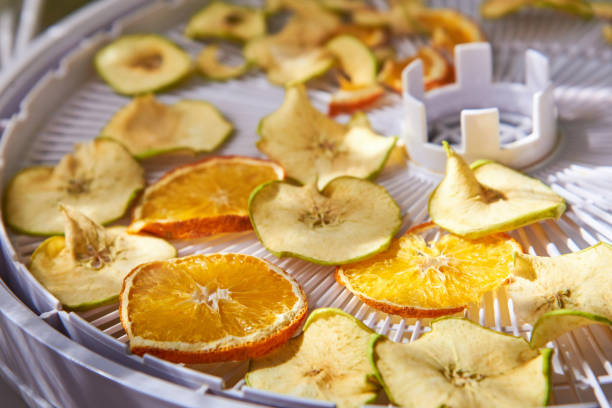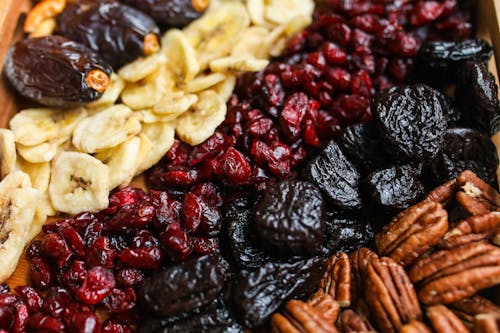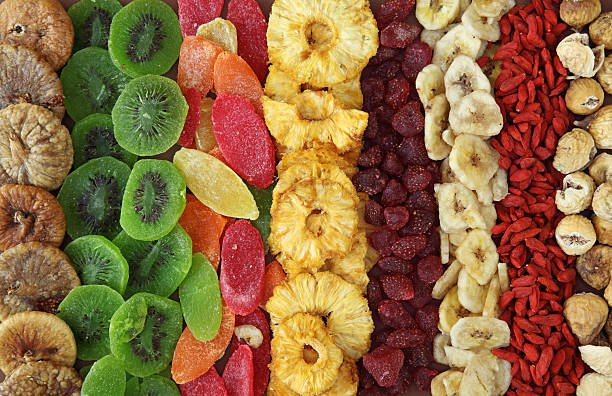This post contains affiliate links, meaning that I may receive compensation if you make a purchase through these links. As an Amazon Associate, I earn from qualifying purchases. This compensation does not influence the content, or recommendations provided. The opinions expressed are my own, and I strive to provide honest and unbiased information.
Imagine a world without your favorite trail mix, granola bars, or even a simple bag of raisins to snack on. It’s hard to believe, but dried fruits have not always been the go-to snack they are today. Their story dates back thousands of years, blending together ancient methods of food preservation, trade routes, and the human desire for sweet, nutritious food. Whether you’re a nutritionist, foodie, or historian, dried fruits have a story that’s as rich and vibrant as their flavors. Let’s take a delicious trip through time and discover how these chewy, tangy treats became a staple in diets around the world.
The Humble Beginnings of Dried Fruits
Dried fruits may seem like a modern-day convenience, but their origins go back to ancient civilizations. In fact, dried fruits are one of the earliest forms of food preservation. The natural drying process was likely discovered by accident when early humans noticed that fruit left out in the sun would shrivel and become chewy—but still taste sweet and delicious.
The Egyptians, around 4,000 B.C., were among the first to intentionally dry fruits. Grapes were dried into raisins, and figs were preserved in the sun, making them last far longer than their fresh counterparts. These early dried fruits became important for survival, especially in regions where food wasn’t always abundant. They were portable, nutritious, and—most importantly—could be stored for long periods without spoiling.
The Spread of Dried Fruits Through Trade
As civilizations advanced, so did the popularity of dried fruits. Trade routes like the Silk Road, connecting the East and West, helped spread dried fruits across the world. From the Middle East to Europe, these sweet morsels became sought after by royalty, merchants, and explorers alike.
For example, in ancient Rome, dried figs were considered a delicacy, often served at lavish feasts. Roman soldiers even carried dried fruits with them on long campaigns, as they provided quick energy and nourishment. The Persian Empire, located in what is now Iran, was also known for its use of dried fruits, particularly apricots and dates, which were traded with neighboring regions.
In medieval times, dried fruits continued to be highly prized, especially during winter months when fresh fruit was unavailable. The Mediterranean region became particularly famous for its sun-dried figs, raisins, and dates, which were exported to various parts of Europe. By this time, dried fruits had become more than just a food item—they were symbols of wealth and trade power.
The Art and Science of Drying
But how exactly did people dry fruits back in the day? The most basic method, which is still used today, involves drying fruit in the sun. This method works best in hot, dry climates, where the sun can naturally evaporate the water in the fruit, leaving behind concentrated sugars, flavors, and nutrients.
Sun drying wasn’t the only method, though. Early cultures also used wind drying, particularly in cooler climates. They would hang fruits out in the open air to dry slowly over time. As drying methods became more sophisticated, ovens and kilns were used to speed up the process, particularly in areas where the climate wasn’t ideal for natural sun drying.

In the modern world, we have the luxury of electric dehydrators, which allow us to dry fruits at precise temperatures, retaining more nutrients and offering consistent results. But whether dried by the sun or with the help of technology, the result is the same: a nutritious, portable snack that can be enjoyed anytime, anywhere.
Nutritional Powerhouses: Why Dried Fruits Matter
Aside from their portability and long shelf life, dried fruits pack a serious nutritional punch. The drying process removes most of the water, concentrating the vitamins, minerals, and fiber. Raisins, for example, are rich in iron and potassium. Dried apricots offer a good dose of Vitamin A, while dates are loaded with antioxidants and natural sugars.
For centuries, dried fruits were considered essential for survival, providing vital nutrients during long winters or journeys where fresh food was scarce. Today, they remain a popular snack for athletes, hikers, and anyone looking for a quick energy boost.
However, it’s important to note that dried fruits are calorie-dense because of the concentrated sugars. Nutritionists often recommend enjoying them in moderation, especially if you’re watching your sugar intake. The trick is to balance dried fruits with other nutrient-rich foods to create a well-rounded, healthy diet.
Dried Fruits in the Kitchen
Now that you know their history, let’s talk about how dried fruits made their way into our kitchens. Dried fruits have always been versatile ingredients in cooking and baking. In the Middle East, dried dates are a key ingredient in sweet desserts and savory dishes alike. In Europe, dried fruits are often used in holiday recipes, like fruitcake, panettone, and stollen.
More recently, dried fruits have become popular in health-conscious recipes like energy bars, trail mixes, and salads. Their natural sweetness makes them an excellent alternative to processed sugars, while their chewy texture adds a satisfying bite to any dish.
Chefs and home cooks alike have embraced the use of dried fruits in both savory and sweet dishes. Whether tossed into a fresh salad for a pop of sweetness, baked into hearty bread, or used as a topping for yogurt, dried fruits can elevate the flavor and nutritional profile of almost any meal.
Modern-Day Dried Fruits: From Grocery Stores to Gourmet Markets
Walk into any grocery store today, and you’ll find a wide variety of dried fruits on the shelves. From common choices like raisins and apricots to more exotic options like goji berries and dragon fruit, there’s something for everyone. But while dried fruits are now widely available, not all dried fruits are created equal.
One key difference between ancient and modern dried fruits is how they’re processed. Many commercially produced dried fruits are treated with preservatives like sulfur dioxide to extend their shelf life and keep their vibrant colors intact. This is especially common with fruits like apricots, which would otherwise turn brown during the drying process. Some dried fruits also have added sugar, making them much sweeter than their natural counterparts.
For those who prefer a more natural option, organic and unsweetened dried fruits are increasingly available at health food stores and online retailers. These fruits are often sun-dried or dehydrated without the use of chemicals, offering a purer taste and higher nutritional value.
The Global Love Affair with Dried Fruits

Throughout history, dried fruits have crossed cultural and geographic boundaries. They’ve been a source of nourishment for explorers, a treat for kings and queens, and a staple in households from ancient times to the present day. Whether you’re snacking on dried mango in the Philippines, indulging in dried dates in Morocco, or enjoying a handful of raisins from California, you’re part of a long, delicious tradition that spans the globe.
And it’s no wonder dried fruits continue to be so popular. They offer the perfect balance of convenience, nutrition, and flavor. Plus, their versatility in the kitchen makes them a favorite ingredient for foodies, chefs, and nutritionists alike.
Conclusion
Dried fruits have come a long way from their humble beginnings in ancient Egypt. Their rich history, combined with their nutritional benefits, has made them a timeless food that continues to evolve.
So, next time you grab a handful of raisins, take a moment to appreciate the history and journey that brought these little fruits to your table. They’re more than just a snack—they’re a piece of history, packed with nutrition and flavor.
For more information on the value of dried fruits, read: Healthy Snacking is Possible


